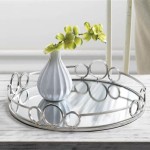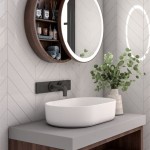What Is Mirror Image in Maths?
In mathematics, the concept of a mirror image, also known as a reflection, is a fundamental idea in geometry. It describes how a shape or object appears when it is flipped across a line, called the line of reflection. This process preserves the size and shape of the original object but reverses its orientation. Understanding mirror images is essential in various areas of mathematics, including geometry, symmetry, and transformations.
Key Points of Mirror Images
Mirror images are defined by several key points that distinguish them from other transformations in mathematics. These include:
- Reflection across a line: The primary characteristic of a mirror image is the reflection of an object across a specific line. This line acts as a mirror, with the reflected object appearing on the opposite side.
- Preservation of size and shape: A mirror image preserves the size and shape of the original object. This means the reflected object is congruent to the original, having the same dimensions and angles.
- Reversal of orientation: The mirror image reverses the orientation of the original object. If the original object is oriented clockwise, its mirror image will be oriented counter-clockwise, and vice-versa.
Applications of Mirror Images
The concept of mirror images has various applications within mathematics and beyond. Here are a few examples:
- Geometry: Mirror images are crucial in understanding geometric transformations. They are used to define reflections and other related transformations, such as rotations and translations.
- Symmetry: Mirror images are integral to the study of symmetry. A figure is considered symmetrical if its mirror image is identical to the original figure. This concept is essential in geometry and other fields, such as art and design.
- Transformations: Mirror images are a fundamental type of transformation in geometry. Other transformations, such as rotations and translations, can be derived from reflections.
- Real-world applications: Mirror images appear in numerous real-world applications. They are used in architecture, design, and even in the creation of optical illusions.
Understanding Mirror Images: An Example
To illustrate the concept of a mirror image, consider a simple example. Let's say you have a triangle with vertices A, B, and C. To create its mirror image, you would need to draw a line of reflection. Let's assume the line of reflection is vertical, passing through the middle of the triangle. Now, you would reflect each point of the triangle across this line. Point A would be reflected to point A', point B to B', and point C to C'. The resulting triangle A'B'C' would be the mirror image of the original triangle ABC.
The resulting mirror image would have the same size and shape as the original triangle but would be oriented in the opposite direction. If the original triangle was oriented clockwise, the mirror image would be oriented counter-clockwise.
Key Characteristics of Mirror Images
In summary, mirror images have several specific characteristics that differentiate them from other transformations:
- Reflection Across a Line: They are always created by reflecting an object across a specific line.
- Congruence: The original object and its mirror image are congruent, sharing the same size and shape.
- Orientation Reversal: The mirror image always has the opposite orientation compared to the original object.
The concept of mirror image is fundamental in geometry and has numerous applications in various fields. It is important to understand these key characteristics and their implications for other transformations and symmetry.

Mirror Image A Maths Dictionary For Kids Quick Reference By Jenny Eather

Reflection Symmetry Of The Image Mirror Line Symmetrical

Reflection Symmetry Of The Image Mirror Line Symmetrical

Mirror Lines Can Be Placed Anywhere You Just Reflect

Reflection Symmetry Of The Image Mirror Line Symmetrical

Reflection Symmetry Of The Image Mirror Line Symmetrical

4 15 Reflection In A Mirror Line Basic Maths Core Skills Level

11 Plus Key Stage 2 Maths Shape And Space Transformation Reflection Practice Papers Ks2 Is The Image That You Would See If Looked At A

11 Plus Key Stage 2 Maths Shape And Space Transformation Reflection Practice Papers Ks2 Is The Image That You Would See If Looked At A

Reflection Symmetry Of The Image Mirror Line Symmetrical








